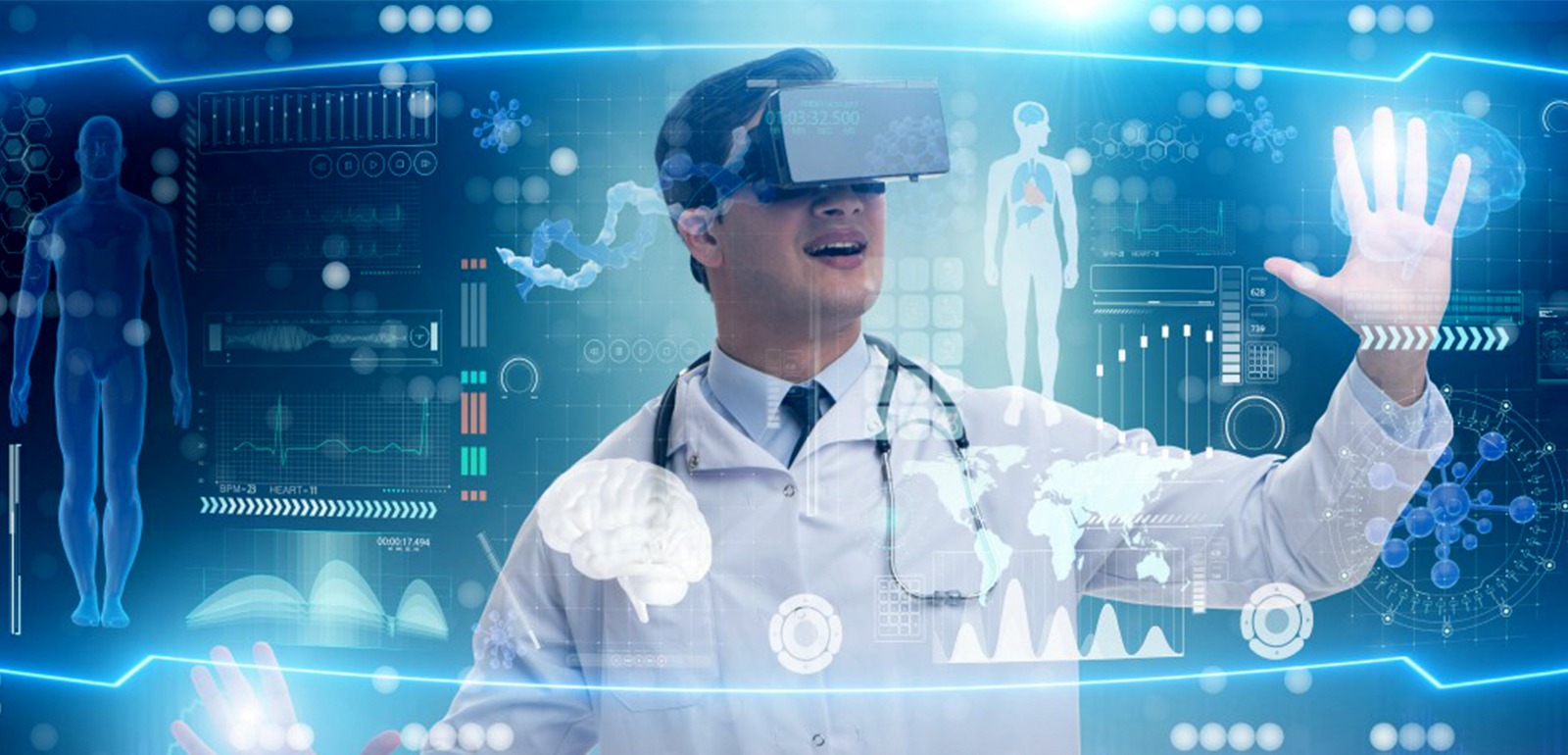Virtual reality (VR) and augmented reality (AR) has the potential to improve the prospects of the healthcare industry. These technologies with latest innovations are taking the route of advancement in the field of healthcare. AR/VR in healthcare is helping doctors and surgeons to offer the ability to diagnose surgery on their patients more accurately. The utilization of the AR in healthcare is taking the treatment parameter to the successful level. Solving complex operation with the help of the AR/VR is upgrading the performance. According to report the AR market is expected to reach $759.98 million by the end of 2020. The application of augmented reality technology is opening up new opportunities in the healthcare industry. It’s expected that by the year 2020, the global market will reach a value of $1.5B.
Adoption of these technologies is helping to reduce the gap between the doctor and patients. Moreover, it is giving surgeons and doctors access real-time data and patient information faster than ever before. Practicing medicine with these sister technologies is bringing huge value to the medical field. Nothing can be better than VR when it comes to educating students and allowing them visualize health issues and scenarios.
Benefits of AR/VR in healthcare

AR/VR in the field of medicine is offering revolutionary benefits. Implementation of AR can offer valuable hands-on learning experiences to the students. Medical institutions are incorporating VR for providing virtual training in order to simulate patient and surgical encounters. This helps students to learn while making mistakes in a real-life virtual environment. Here are some benefits to helping the healthcare sector to change the current prospect.
Remote assistance
Alliance of Augmented Reality and healthcare is helpful for practitioners and industry professionals. Connecting patients remotely is the best way to utilize resources. Through AR technology, it is easy to connect multiple users around the world. Augmented reality has become a powerful tool pave the way for flawless visual guidance of the doctors. During the remote surgical procedures, the surgeons could collaborate with the help of the AR to ensure accuracy and efficiency.
Immersive Training:

Virtual Reality provides cutting-edge training to medical professionals and students in the healthcare industry. Virtual reality is the best way to promote world-class medical education and patient safety. Innovative technologies AR/VR in healthcare includes next-generation surgical simulators and learning management systems. Use of an interactive surgical simulator that guides you step-by-step through every part of an operation, and every decision that’s made along the way.
Virtual Surgery
Augmented Reality technology is helping in combining computer-generated images with a real object. This advantage of AR has helped to develop a sophisticated yet simple and the modifiable AR solution. Using AR reconstructive surgery can be viewed with the proper layout of surgical parts. Surgeons for evaluating the results of facial reconstruction before the operation are using AR technology. The field of cosmetic surgery with the augmented reality system could be a useful guide for the trainee as well as the doctors. Three dimensional (3D) simulations of the body part help to plan and perform the operations.
Real-time Connection
AR/VR provides real-time information of the patient to surgeons during simple or complex procedures. This can be considered as the next step to transform the healthcare scenario. Augmented reality allows surgeons to study patients’ MRI data and CT scans with an overlay of the patient anatomy before going into surgery. Therefore, surgeons will be able to visualize virtually the functioning of internal organs without even having to cut open a body. AR can help physicians to save time in the case of emergency surgery. Moreover, it offers the immersive way to perform accurate and low-risk surgeries hassle free.
Use case: AR is helping to transform the face of healthcare

Advanced technologies are continually arriving with great benefits in healthcare provision. The market is transforming at a rate of knots with high-end promises. AR is a promising technology helping to achieve widespread adoption to overcome challenges in the healthcare sector. AR can help to view complex procedure to potential customers all over the world any time in-depth demonstrations.
Cosmetic Surgery – ILLUSIO
Augmented Reality technology in a true sense is helpful in combining computer-generated images with a real object. ILLUSIO developed by Quytech is a sophisticated AR solution in the field of cosmetic surgery. The solution is capable to evolve the field of cosmetic surgery, thereby helping surgeons to offer a useful guide for evaluating the results before surgery. 3D-simulation of the desired part is created or reconstructed over the patient’s respective part before the surgery. This helps the patients to view the outcomes before the final cosmetic surgery.
Spinal Surgery
In the field of medical the spinal surgery sometimes is a complex and long process. Specialist with the help of the AR technology is trying to reduce the time for surgery. Israeli-based company Augmedics developed a technology that displays spinal information with the help of AR technology. As a result, the spinal information about the patient is displayed on the spine so that doctors can monitor the patient thoroughly.
Bottom line
AR and VR technologies help to enhance healthcare services. These technologies make medical service delivery more cost-effective, risk-free and increase the learning retention. With VR and AR future of medical professionals is in new heights. Moreover, it can be used in simulation training to reduce the number of hassle tasks.

